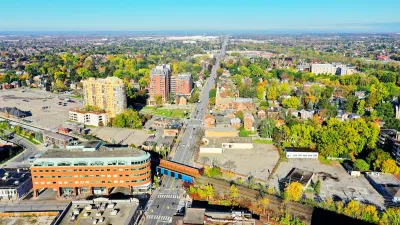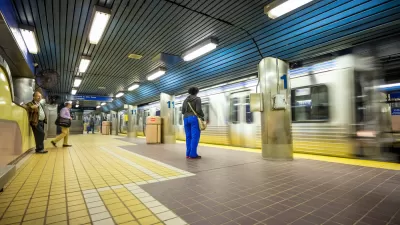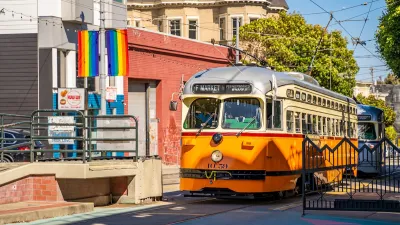Taylor Swift fans are flocking to public transit to attend her concerts, breaking ridership records in cities around the country. Will they keep using transit after the show?

Struggling transit agencies around the country are getting a much-needed boost—if Taylor Swift happens to be playing in their city, that is.
As Jared Brey reports in Governing, Atlanta’s Metropolitan Atlanta Rapid Transit Authority (MARTA) saw triple its normal ridership at the stations surrounding Swift’s concert venue on the weekend she performed. “When Swift played Philadelphia in May, SEPTA, the city's transit system, added late-night trains in its regional rail network, and counted a combined 27,000 fans entering the subway station next to Lincoln Financial Field in the hour after the shows ended.” In Boston, the city sold out of transit tickets for the night of Swift’s show before adding more capacity.
The ridership boost is useful, but do one-off events do anything to improve transit ridership long-term? “What would convert a special-occasion rider into a regular one?” For SEPTA spokesman Andrew Busch, the answer is “a great experience” that includes “everything from frequency, reliability and navigability to cleanliness, good lighting and security presence.”
To accommodate post-pandemic trends, agencies are now looking to increase frequency and service during off-peak travel hours and adapt to provide temporary boosts in service during major special events.
Ultimately, the Swiftie bump is a blip on the radar of transit ridership, but it could convert riders down the line. According to Matthew Dickens, director of policy development and research at the American Public Transportation Association, “big events are a chance to introduce new people to the transit system, and that research shows that people who first use transit when they're young are more likely to ride regularly when they're older.”
FULL STORY: Taylor Swift Fans Give Public Transit a Well-Timed Boost

Alabama: Trump Terminates Settlements for Black Communities Harmed By Raw Sewage
Trump deemed the landmark civil rights agreement “illegal DEI and environmental justice policy.”

Planetizen Federal Action Tracker
A weekly monitor of how Trump’s orders and actions are impacting planners and planning in America.

The 120 Year Old Tiny Home Villages That Sheltered San Francisco’s Earthquake Refugees
More than a century ago, San Francisco mobilized to house thousands of residents displaced by the 1906 earthquake. Could their strategy offer a model for the present?

In Both Crashes and Crime, Public Transportation is Far Safer than Driving
Contrary to popular assumptions, public transportation has far lower crash and crime rates than automobile travel. For safer communities, improve and encourage transit travel.

Report: Zoning Reforms Should Complement Nashville’s Ambitious Transit Plan
Without reform, restrictive zoning codes will limit the impact of the city’s planned transit expansion and could exclude some of the residents who depend on transit the most.

Judge Orders Release of Frozen IRA, IIJA Funding
The decision is a victory for environmental groups who charged that freezing funds for critical infrastructure and disaster response programs caused “real and irreparable harm” to communities.
Urban Design for Planners 1: Software Tools
This six-course series explores essential urban design concepts using open source software and equips planners with the tools they need to participate fully in the urban design process.
Planning for Universal Design
Learn the tools for implementing Universal Design in planning regulations.
Clanton & Associates, Inc.
Jessamine County Fiscal Court
Institute for Housing and Urban Development Studies (IHS)
City of Grandview
Harvard GSD Executive Education
Toledo-Lucas County Plan Commissions
Salt Lake City
NYU Wagner Graduate School of Public Service





























